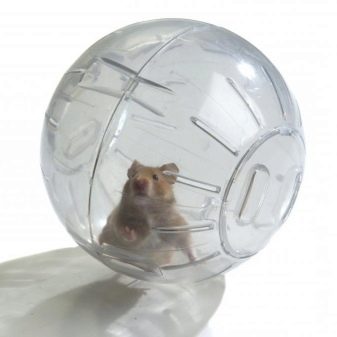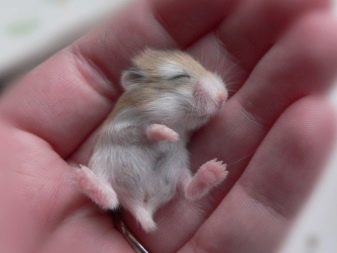Angora hamster: breed features, maintenance and care

Hamsters are cute, small pets that are loved by many. Often, parents allow such a pet to have young children. There are a huge number of breeds and types of such animals. One of the most popular are the Angora hamsters.
Description
The Angora hamster, like any other hamster, has some specific features that you must definitely get acquainted with before purchasing and adopting such a pet.
Appearance and habitat
The Angora hamster (the second name of the animal is the Syrian hamster) is a pet, the original homeland of which is Asia and America. In these countries, animals can be found in natural conditions. Free-living Angora hamsters prefer an area with a temperate climate and a lot of vegetation.
The Angora hamster got its name due to its unusual appearance: due to the presence of shaggy long hair on its body, which can reach 2 cm in length in females and 6 cm in length in males. Thus, already by its appearance, you can easily determine the sex of the animal.
Such an external characteristic of the animal resembles angora cats. Therefore, the animal was given a similar name.


The color of angora hamsters can be very varied. It can be either monochromatic or in the form of a combination of several colors: black, white, gray, beige, spotted.
In size, the animals can reach 10 cm in length, and their weight usually does not exceed 200 g. Pets do not have a tail.In addition, it is important to note that angora hamsters are similar in appearance to guinea pigs. In this regard, animals are often confused with each other.


Character and behavior
Angora hamsters are quite friendly to humans species of animals. That is why most often it is they who are born in the houses where small children live. Syrian rodents lend themselves well to training and are considered quite intelligent: they can be trained to the tray, as well as taught a variety of tricks.
If you start to train and train a hamster from a very early age, then later he will easily follow all commands.
Do not be afraid to take the animal in your arms: getting used to human company, the hamster will not bite and show aggression towards others.


Life span
If we talk about specific indicators regarding the life expectancy of angora hamsters, then there is no definite answer. If we talk about average figures, then it is believed that representatives of this breed of animals live no more than 2 years. At the same time, it is important to note that in the case of attentive and caring care, as well as if all the necessary conditions of detention are observed, you can extend the life of your pet at least 2 times (up to 4 years). The hamster of the Angora breed, which is recognized as the longest-living record holder, is an animal that has survived to the age of 7 years.
Of the characteristics that affect the lifespan of a hamster, it should be mentioned:
- the conditions of his birth;
- quality and standard of living before purchase;
- method of transportation after purchase;
- diet;
- conditions of detention.
If you follow all the instructions of specialists and listen to the advice of veterinarians, then you can not only significantly extend the life of your pet, but also significantly improve the quality of his life.


Selection and arrangement of the cage
Obviously, it is necessary to keep a pet in a special cage. You need to make sure that there is enough space in it for the normal functioning of the hamster, so do not get too small a cage. It is also important to remember that the cage should be quite strong, because the Angora breed is much larger (and therefore stronger) than other types of hamsters.
Your pet can damage the bars of the cage or break a precarious door and get out of its containment. In the event that the hamster manages to leave the cage, then inevitably negative consequences may arise: for example, the animal can chew on the wiring. Therefore, preference should be given to products made from quality materials that have proven their reliability and durability.
A running wheel must be in your pet's cage, because angora hamsters need to move a lot. Remember that the treadmill, like all other components of the animal's home, must be adequate for its size (taking into account the long coat).
It is recommended to cover the bottom of the cage with a special granular filler, not ordinary sawdust filler. This is due to the fact that the sawdust will get entangled in the long hair of the hamster, it will have to be cleaned regularly, and small solid particles will create significant inconvenience to the animal.


Maintenance and care
The Angora hamster is quite easy to keep at home, as it does not require any specific approach to its maintenance. It is thanks to such unpretentiousness and pickiness that this breed of hamsters has earned the love of many people. First of all, it is important to note that veterinarians and biologists are not allowed to bathe your hamster. The thing is that the presence of the animal in the water will lead to hypothermia, and subsequently to various diseases of the pet.
To cleanse the hamster of various kinds of contamination, as well as to carry out hygienic procedures for him, one should do not water, but sand baths. Moreover, the sand must be absolutely clean.It is best if you purchase it from a pet store and then go through the quartzing procedure. In addition, to ensure a pleasant, neat and well-groomed appearance for your pet, it should be regularly brushed with a special comb.



An important element of maintenance and care is the systematic cleaning of the cage. It should be carried out at least once every 7 days (if necessary, cleaning can be carried out more often). When cleaning, the pet should be taken out of the cage and placed in another place. A walking ball, portable cage, or even a simple glass jar will do.
The main cage of the hamster should be rinsed with warm water without the use of any chemically synthesized detergent. After completing the procedure, the hamster can be placed back in the cage. Remember that in the absence of regular cleaning, the cage (and subsequently the animal itself) will begin to emit an unpleasant odor and become a source of multiplication of various harmful bacteria that are dangerous not only for the hamster, but also for humans.


And also the diet of pets deserves special attention. It is believed that hamsters should feed on grains of cereals. However, this is not entirely true. In addition to cereals, vitamins should also be included in the diet of fluffy animals. To meet such a need for hamsters, special complex feeds are sold in pet stores. In addition to food, hamsters can be given:
- vegetables: apples, pumpkin, salad;
- greens: dill, parsley;
- seeds;
- nuts.
Prohibited foods include:
- cabbage;
- potatoes;
- garlic;
- onion;
- citrus.
Diet - 2 times a day. And also throughout the day, you should regularly replenish the rodent's water supply.


Syrian rodents are quite thermophilic animals. If the air temperature in the room where they are kept falls below 10 ° C, then the hamsters hibernate. To wake them up, it is enough to take the animal in your arms and warm it up with your warmth. That is why a constant temperature regime should be maintained. In the cold season, this can be done using ordinary household devices: air conditioners, heaters, fireplaces.
It is important to note that veterinarians do not prohibit keeping several hamsters in one cage. However, remember that the size of the cell should allow each of them to function normally and maintain their vital activity at the proper level. And also it should be borne in mind that it is impossible to keep several males in one cage. Otherwise, they will show signs of obvious aggression towards each other and even fight. The result of such collisions can be the death of one or both animals, or at least serious injury to the animals.


Diseases
Angora hamsters are susceptible to a wide variety of diseases. That is why it is important to carry out all the care measures, which are quite simple. The most common ailments of Syrian rodents include:
- diarrhea - occurs when overeating raw vegetables;
- constipation - indicates a lack of fluid in the body;
- colds and flu - a variety of water procedures are a common cause of these ailments;
- infectious diseases;
- cystitis;
- lichen;
- inflammation of the buccal sacs - may appear due to damage from sharp objects.
If you show signs of illness, you should seek help from your veterinarian.


Reproduction
Female Angora hamsters carry babies pretty quickly: in just 2 weeks. That is why (if you do not plan to breed animals) it is not recommended to keep animals of different sexes in the same cage. Numerous offspring will appear very soon. At a time, from 4 to 18 new individuals can be added. At the same time, it is worth knowing that females can eat the offspring in whole or in part.
Of course, it is easiest to get offspring from young hamsters: animals are ready to reproduce from the age of 1.5 months. Moreover, hamsters can be mated not only of one, but also of different breeds.Animals should be of the same size whenever possible.


What mistakes beginners make in caring for angora hamster - in the video below.








